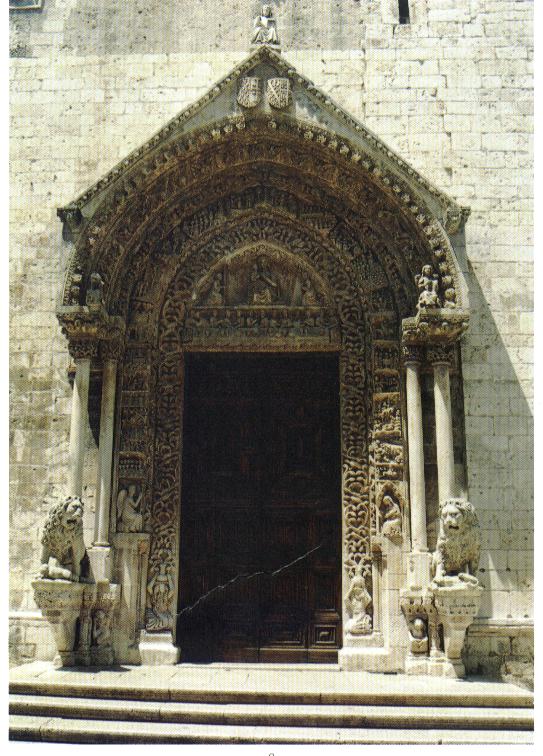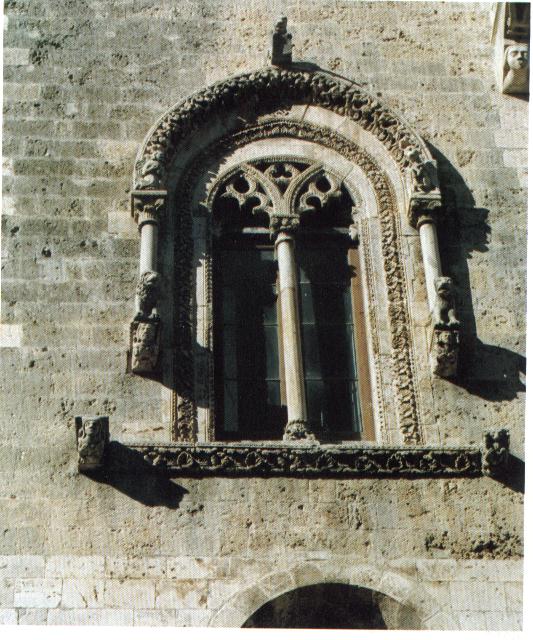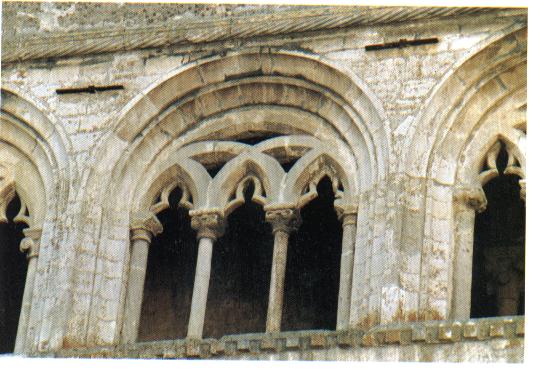ALTAMURA'S
CATHEDRAL  |
|
|
||
|
From its very beginning in 1232 the Cathedral has been the driving force behind the evolution of Altamura's community life and rich religious architecture. The structural changes which the Cathedral has undergone up to the unification of Italy (1861) run parallel with major building projects that substantially alter Altamura's built environment. Today's visitor sees precious little of Frederick's original construction. Among the original elements are the three-light windows on the gallery with the sublime arabesque mullions, both in the interior and on the northern side above the 13th century Angevin Portal. Another pristine feature is the twomullioned window on the left side of the fašade, probably transferred from the original entrance on the western perspetive. The precious ambo (stone pulpit) now placed just inside the church arguably dates back to the initial structure.It was disassembled in the 15th century to be replaced by one carved in walnut like the 84 stalls in the chancel. Emperor Frederick II hept for himself and his successors the rigth to appoint the prelate of the palatine church, as if it were a chapel attached to the king's palace. This unique privilege for Altamura's church was claimed by kings and local inhabitants alike, all the way to the Lateran Pacts of 1929 when the Pope could finally name of his own authority the Bishop of Altamura. Several creste and inscriptions both out side and within the church as well as on the sumptuosus counter ceiling in guided wood bear witness to this royal privilege. Tha late 14th early 15th century portal is an oustanding example of multicultural craftsmanships, for it was presumably executed by itinerant masters - joined by local artists - hired on the great pilgrim routes from Santiago de Compostela to Jerusalem including the Taranto by-pass of the Appian Way. Conversely, the mighty lions that watch over the entrance are masterpieces of Apulian sculpture (1533). The Cathedral's interior is endowed with 16th century works of art in the chapels on the left aisle and in the airy chancel. It was lined with marble and stucco work during major renovations carried out from 1854 to 1861. A for collection of paintings by masters of the Neapolitan School wsa also acquired in the 19th century.
Testo da "Il Duomo di Altamura" - Guida Rapida. Di G. Bolognese
|
Commissioned by Bishop Niccol˛ Sapio, the majestic pair of lions that wathc over the entrance were sculpted by Master Antonio da Andria in 1533. The lions are part of the plan for major extensions decided by Francesco Rossi and by his successor, Niccol˛ Sapio, both from Altamura.
The
crests atop the slightly ogival arches, just beneath the cusp, bear
witness to the fact that the esemplar of all Southern portals was
commissioned by the Angevin kings. Christ's mission on earth is depicted
in ascending order. The tympanum contains a formidable and dramatic
synthesis of the complete narrative cycle: the Annunciation and Mary's
divine motherhood in the lunette, and the Last
Supper in the predella just below.
The
structural design of the gracious two-mullioned window (12th cent.)
precedes the lofty portal's. In its present location, it is an airy
projection of Frederick's own Gothic style. However, the window shows
signs of damages and alterations caused by its removal from the original
location.
He
fligth of three-mullioned windows slims the bulky Nothern side. The
triple-armed street ligths installed in 1998 shine even on the capitals
along the inner gallery, producing a fascinating atmosphere after sunset |
|||



